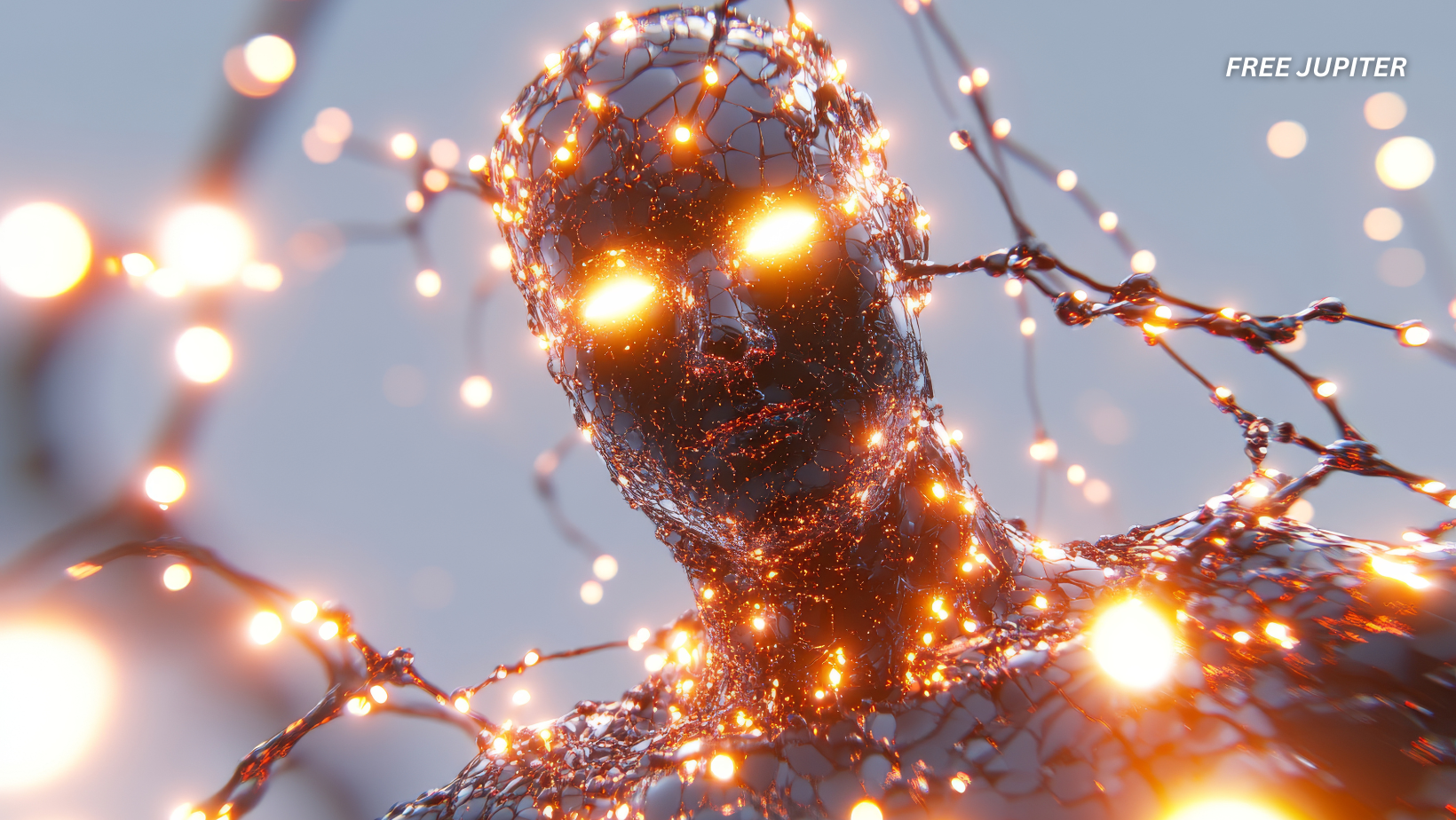Friendly Note: FreeJupiter.com shares general info for curious minds 🌟 Please fact-check all claims—and always check health matters with a professional 💙
Artificial intelligence (AI) has a reputation problem. In the public eye, it’s often the troublemaker of the tech world—cranking out clumsy essays, producing questionable art, and, depending on your perspective, slowly chipping away at human creativity. Critics say it’s making students less capable of deep thinking, gobbling up jobs, and consuming vast amounts of energy just to generate what some call “digital junk.”
Some AI systems are venturing into far more ambitious territory—like rewriting the rules of nature.
Recently, a research team at Emory University developed a machine learning (ML) model that didn’t just analyze data or optimize an experiment. Instead, it stumbled into something extraordinary: it uncovered previously unknown physical behavior in a mysterious corner of science called dusty plasma physics.
The twist? The AI wasn’t just crunching numbers—it was acting like a scientist in its own right, revealing patterns and relationships that human researchers had never documented before.
Dusty Plasma: A Cosmic Ingredient with a Terrestrial Twist
Most of us learn in school that matter comes in three familiar forms: solid, liquid, and gas. But there’s a fourth state of matter—plasma—that’s arguably more important than all the rest combined. Plasma is essentially an electrified gas where atoms lose their electrons, creating a soup of charged particles. It powers the Sun, fills interstellar space, and makes up 99.9% of all ordinary matter in the universe.
Now imagine adding tiny, charged dust particles into this electrically active mix. That’s dusty plasma—and while it may sound like a lab experiment, it’s surprisingly common. You can find it in:
- Outer space: swirling through the rings of Saturn, drifting in nebulae, or clinging to the surfaces of asteroids.
- Planetary atmospheres: contributing to strange optical effects, like the glowing “noctilucent” clouds high in Earth’s sky.
- Natural disasters: forming in volcanic ash clouds or the smoke plumes of massive wildfires.
- Industrial settings: appearing in semiconductor manufacturing processes and plasma-based coating technologies.
One striking example comes from wildfire research. When vegetation burns, soot particles can become electrically charged. These particles mix with ionized gases produced by the heat, creating a miniature dusty plasma system right here on Earth. Scientists study such events not just for curiosity’s sake, but because they can influence weather, air quality, and even climate patterns.
Read more: New Study Finds Video Games May Actually Boost Kids’ IQ—Surprising Researchers
The AI That Saw What Humans Missed
The Emory team’s ML model wasn’t your average “black box” AI—where the inner workings are so opaque that even the developers can’t fully explain its reasoning. Instead, they built it to be interpretable, meaning they could track exactly how it reached each conclusion.
The result? The AI identified non-reciprocal forces—a peculiar kind of interaction—within dusty plasma that had never been mapped out so precisely before.
When Nature Breaks the Rules: Non-Reciprocal Forces
In everyday physics, we’re taught Newton’s third law: every action has an equal and opposite reaction. If you push a wall, it pushes back with the same force.
But in dusty plasma, things don’t always play fair. Non-reciprocal forces occur when the push from one particle to another isn’t matched by an equal push in return.
The researchers offered a simple analogy: imagine two boats moving on a lake. If the first boat moves, it creates a wake that affects the second boat differently than the second boat’s wake affects the first. The interaction depends on their positions, speeds, and even the way water flows around them.
In dusty plasma, the AI found a quirky pattern:
- The leading particle tends to attract the particle behind it.
- The trailing particle consistently repels the leader.
Some physicists had guessed this might happen, but the AI delivered a precise mathematical description for the first time.
AI as a Myth-Buster
This discovery wasn’t just about finding something new—it also involved overturning long-standing scientific assumptions.
Old belief #1: The electrical charge of a dust particle in plasma is proportional to its size.
AI’s correction: While larger particles often carry a bigger charge, the relationship isn’t perfectly proportional. Factors like temperature and density also influence the charge.
Old belief #2: The forces between dust particles depend only on the distance between them.
AI’s correction: Particle size also matters—changing how they interact, even if the distances remain the same.
These might sound like small tweaks, but in physics, such refinements can completely reshape models used to predict behavior in real-world systems.
Read more: What Happens When You Dump a Narcissist? These 8 Reactions Are Almost Guaranteed
Teaching AI Without a Playbook
Training AI to recognize cats or translate languages is relatively straightforward—just feed it massive datasets and let it learn patterns. But training AI to discover new physics? That’s another story.
In this case, there was no vast library of dusty plasma data for the AI to study. The researchers had to design a system that could work with limited information, while still allowing it to explore uncharted territory.
They essentially built the AI a partial “map” of what was already known, then gave it the freedom to roam beyond the edges. It’s a bit like handing an explorer a sketch of the coastline and saying, “See what you can find inland.”
A Field with a Surprising History
Dusty plasma research might sound niche, but it has fascinated scientists for decades.
- In the 1990s, experiments aboard the Mir space station showed how dust particles in microgravity could self-organize into intricate, crystal-like structures. These were called plasma crystals, and their orderly patterns stunned researchers.
- More recently, studies of dusty plasma on the International Space Station (ISS) have provided clues about how cosmic dust behaves in zero gravity—knowledge that could help explain planet formation in young star systems.
- In 2014, scientists in Iceland studied volcanic ash clouds from the Eyjafjallajökull eruption, finding that they displayed dusty plasma-like charging behaviors that affected how ash dispersed in the atmosphere.
By revealing new aspects of dusty plasma, the Emory AI is adding to this growing legacy—potentially giving future missions and technologies a deeper understanding of particle interactions in extreme environments.
Beyond the Lab: Why This Matters
At first glance, “new dusty plasma physics” might sound like an academic curiosity. But plasma is central to some of humanity’s most ambitious projects.
For example:
- Fusion energy research—Fusion reactors, which aim to mimic the Sun’s energy production, must control plasma with extraordinary precision. Insights from dusty plasma could inform better models of particle interactions inside these machines.
- Space exploration—Spacecraft moving through planetary rings or dusty atmospheres could be affected by charged particle interactions. Predicting these forces could improve navigation and safety.
- Environmental science—Understanding how charged dust behaves could refine climate models and improve predictions of how volcanic or wildfire particles spread.
The AI’s methods also have potential beyond plasma physics. The same approach could be used to study many-body systems in fields as diverse as condensed matter physics, materials science, and even biology—think swarming behavior in bacteria or flocking in birds.
The Future: AI as a Scientific Partner
Traditionally, AI in science has been a tool—sorting through massive datasets, optimizing equipment, or spotting patterns in existing data. But this study hints at a new role: AI as a collaborator capable of genuine discovery.
As Justin Burton from the Emory team put it:
“I think of it like the Star Trek motto: to boldly go where no one has gone before. Used properly, AI can open doors to whole new realms to explore.”
It’s a sentiment echoed by other researchers exploring AI-driven discovery. In 2023, for example, DeepMind’s AlphaFold revolutionized biology by predicting the 3D structures of nearly every known protein—an achievement that could accelerate drug development for years to come. In materials science, AI models are already helping design new alloys and superconductors faster than traditional trial-and-error methods.
If this dusty plasma breakthrough is any indication, the next big discoveries in science might come from partnerships where human intuition and AI’s pattern-finding abilities work hand in hand.
Read more: Leaked AI Conversations Show Users Are Asking ChatGPT to Cross Ethical Boundaries
A New Chapter in Discovery
AI has been criticized—sometimes deservedly—for producing shallow, mass-generated content. But when carefully designed and thoughtfully guided, it can become something far more profound: a tool for curiosity.
The Emory University team’s work shows that AI can do more than just automate—it can illuminate. It can wander into the blank spaces on our scientific maps and return with something entirely new.
And while most of us will never see a dusty plasma crystal up close, the physics behind them could ripple into technologies and discoveries that touch every part of our lives—from cleaner energy to safer space travel.
In other words, AI didn’t just find something interesting about dusty plasma. It reminded us that science still has vast, hidden frontiers—and sometimes, the best way to explore them is with an unlikely companion.










